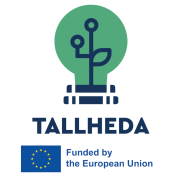Digital Agriculture: Bridging Sustainability and Innovation for Future Farming
Digital Solutions for Greener Fields: Harnessing Technology in Agriculture
Fertile Ground: Exploring the Imperative for Digital Agriculture in Modern Farming
Concern over the environmental catastrophe resulting from widespread resource-dependent development is growing. According to (Gebresamuel et al., 2021), agriculture has a significant role in greenhouse gas emissions and global warming. The worldwide agricultural sector generates between 21% and 37% of all global carbon emissions, according to research that incorporates the entire lifecycle of farm inputs and product consumption into the calculation framework (Rosenzweig et al., 2020). Environmental degradation will become a critical barrier to sustainable agriculture and food security (Wu et al., 2018) by endangering agricultural goods’ yield and safety and posing health risks to humans (Gu et al., 2015). Adopting ecological agriculture technology (EATs) presents a possible way to address these issues. In agricultural production and management, EATs refer to various techniques and strategies farmers use to minimize agrarian pollution, save resources, and safeguard the ecological environment (Zhou et al., 2023).
There are more chances to advance the development of sustainable agriculture when digital technology is used to empower the agricultural sector. To maximize resource allocation, farmers may greatly reduce their information asymmetry in agricultural production and sales thanks to digital technology, which is the foundation of the digital economy (Harou et al., 2022). For instance, farmers implementing EATs require adequate information (Pan & Zhang, 2018). However, involvement in the digital economy might offer farmers knowledge about technology adoption and fertilizer use, encouraging fertilizer reduction (Deng et al., 2019).
Farmers can comprehend the market demand for ecological agricultural products thanks to e-commerce, which uses information networks as its major carrier and lessens information asymmetry in the agricultural products market (W. Li et al., 2021; X. Li et al., 2021). Digital finance has the potential to lower financing costs significantly, expand the reach of traditional finance, improve financial accessibility for remote areas and vulnerable populations, and significantly lessen the challenges and high costs associated with financing for farmers. These benefits stem from digital finance’s low cost and low threshold (Zhao et al., 2022).
Furthermore, intelligent agricultural production and precision administration can be realized through the widespread deployment of digital technologies like the agricultural Internet of Things and drone remote sensing (Sparrow & Howard, 2021).
Cultivating Knowledge Gaps: Analyzing Education Challenges in Digital Agricultural Practices
National scientific and technological capacities must be strengthened in conjunction with initiatives and policies aimed at generating new markets and employment opportunities. This may be the case for the northern and western regions of the EU. However, the southern and eastern regions—home to most of the Widening countries—show significant disparities in R&I spending, scientific production, and innovation output (European Commission, 2020). The research, technological, development, and innovation (RTDI) sector of Greece, one of the two Widening Countries involved in the TALLHEDA partnership, still falls short of the European average (European Commission, 2021).
More precisely, in terms of innovation, Greece is distinguished by low government financing for research (which has been further cut as a result of the nation’s economic crisis), introverted corporations, minimal interaction between universities and businesses, and the transfer of technologies and know-how from elsewhere. Restricted autonomy limits universities’ ability to meet the needs of students and communities, while strengthening the mechanisms connecting tertiary education with labour market requirements and employment opportunities is a key challenge for Greece and its Higher Education Institutes (HEIs), according to the Organisation for Economic Co-operation and Development (OECD) 2020 report (OECD, 2021). Simultaneously, evaluating the quality of educational outcomes in Serbia, the second Widening Country in the TALLHEDA collaboration, is difficult. It is not anticipated that university instructors’ educational competencies will improve systemically.
As a move towards aligning education policies with those pertaining to science, technology, and technological growth in contemporary society, Serbia adopted the “Strategy for the Development of Education in Serbia by 2030” in order to facilitate its convergence with the EU. Additionally, this approach seeks to align educational rules with international agreements and programs (such as those of the UN, EU, Council of Europe, etc.). Enhancing higher education’s quality, relevance, equity, and accessibility is the main goal of this plan (Eurydice, 2023).
Sowing Seeds of Change: Revolutionizing Agricultural Education with the TALLHEDA Initiative
In terms of funding for research, innovation, and scientific achievement, expanding nations lag behind the European average; one notable exception is the field of digital agriculture (DA). Higher Education Institutes (HEIs) in expanding nations, such as Greece and Serbia, have the potential to be key players in resolving this issue, but they require assistance in order to achieve excellence in research and teaching in the field of digital analytics. By creating an ecosystem that encourages close collaboration between HEIs, competence centers, Digital Innovation Hubs, and industry and utilizing cutting-edge digital technologies for the benefit of citizens, business, and scientific advancement, HEIs in Belgium have gathered much experience. TALLHEDA aims to establish a new, long-term Alliance for DA with premier non-widening agricultural universities, local and international stakeholders, and agricultural HEIs from widening nations to support the Quadruple Helix of innovation in Widening countries by helping to increase the critical mass of highly qualified scientists and to develop connections with adjacent ecosystems. Collaboration, the complimentary, high-level skills of all partners, staff mobility, access to state-of-the-art facilities, and cooperative research and teaching initiatives will all help achieve this.
European agrifood and environmental organizations, industries, local authorities, and policymakers are kindly encouraged to take part in the virtual Innovation Hub (VIH) activities as a means of establishing linkages with relevant research efforts and EU stakeholders. With the community’s assistance, the TALLHEDA Best Practices Handbook will be enhanced, and targeted policy recommendations will be developed for training, knowledge transfer, and sharing of best practices. During the project’s duration, there will be continuous and open communication with administrators, research organizations, and European national governments.
References
Deng, X., Xu, D., Zeng, M., & Qi, Y. (2019). Does Internet use help reduce rural cropland abandonment? Evidence from China. Land Use Policy, 89, 104243. https://doi.org/10.1016/j.landusepol.2019.104243
European Commission. (2020). Science, research and innovation performance of the EU 2020. https://research-and-innovation.ec.europa.eu/knowledge-publications-tools-and-data/publications/all-publications/science-research-and-innovation-performance-eu-2020_en
European Commission. (2021). European Innovation Scoreboard [Text]. https://ec.europa.eu/commission/presscorner/detail/en/IP_21_3048
Eurydice. (2023). National Education Systems. https://eurydice.eacea.ec.europa.eu/national-education-systems/serbia/overview
Gebresamuel, G., Opazo-Salazar, D., Corral-Núnez, G., van Beek, C., Elias, E., & Okolo, C. C. (2021). Nutrient Balance of Farming Systems in Tigray, Northern Ethiopia. Journal of Soil Science and Plant Nutrition, 21(1), 315–328. https://doi.org/10.1007/s42729-020-00362-3
Gu, B., Ju, X., Chang, J., Ge, Y., & Vitousek, P. M. (2015). Integrated reactive nitrogen budgets and future trends in China. Proceedings of the National Academy of Sciences, 112(28), 8792–8797. https://doi.org/10.1073/pnas.1510211112
Harou, A. P., Madajewicz, M., Michelson, H., Palm, C. A., Amuri, N., Magomba, C., Semoka, J. M., Tschirhart, K., & Weil, R. (2022). The joint effects of information and financing constraints on technology adoption: Evidence from a field experiment in rural Tanzania. Journal of Development Economics, 155, 102707. https://doi.org/10.1016/j.jdeveco.2021.102707
Li, W., Ruiz-Menjivar, J., Zhang, L., & Zhang, J. (2021). Climate change perceptions and the adoption of low-carbon agricultural technologies: Evidence from rice production systems in the Yangtze River Basin. Science of The Total Environment, 759, 143554. https://doi.org/10.1016/j.scitotenv.2020.143554
Li, X., Guo, H., Jin, S., Ma, W., & Zeng, Y. (2021). Do farmers gain internet dividends from E-commerce adoption? Evidence from China. Food Policy, 101, 102024. https://doi.org/10.1016/j.foodpol.2021.102024
OECD. (2021). Education Policy Outlook. OECD. https://doi.org/10.1787/45089a04-en
Pan, D., & Zhang, N. (2018). The Role of Agricultural Training on Fertilizer Use Knowledge: A Randomized Controlled Experiment. Ecological Economics, 148, 77–91. https://doi.org/10.1016/j.ecolecon.2018.02.004
Rosenzweig, C., Mbow, C., Barioni, L. G., Benton, T. G., Herrero, M., Krishnapillai, M., Liwenga, E. T., Pradhan, P., Rivera-Ferre, M. G., Sapkota, T., Tubiello, F. N., Xu, Y., Mencos Contreras, E., & Portugal-Pereira, J. (2020). Climate change responses benefit from a global food system approach. Nature Food, 1(2), 94–97. https://doi.org/10.1038/s43016-020-0031-z
Sparrow, R., & Howard, M. (2021). Robots in agriculture: Prospects, impacts, ethics, and policy. Precision Agriculture, 22(3), 818–833. https://doi.org/10.1007/s11119-020-09757-9
Wu, Y., Xi, X., Tang, X., Luo, D., Gu, B., Lam, S. K., Vitousek, P. M., & Chen, D. (2018). Policy distortions, farm size, and the overuse of agricultural chemicals in China. Proceedings of the National Academy of Sciences, 115(27), 7010–7015. https://doi.org/10.1073/pnas.1806645115
Zhao, P., Zhang, W., Cai, W., & Liu, T. (2022). The impact of digital finance use on sustainable agricultural practices adoption among smallholder farmers: An evidence from rural China. Environmental Science and Pollution Research, 29(26), 39281–39294. https://doi.org/10.1007/s11356-022-18939-z
Zhou, W., Qing, C., Deng, X., Song, J., & Xu, D. (2023). How does Internet use affect farmers’ low-carbon agricultural technologies in southern China? Environmental Science and Pollution Research, 30(6), 16476–16487. https://doi.org/10.1007/s11356-022-23380-3
Contacts
Project coordination
Dr ([email protected])
Agricultural University of Athens, Greece
Project dissemination, exploitation, and communication
MSc Angeliki Milioti ([email protected])
Smart Agro Hub, Greece










































































